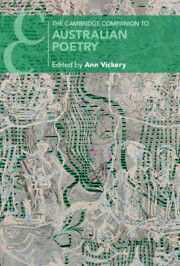Book contents
- The Cambridge Companion to Australian Poetry
- The Cambridge Companion to Australian Poetry
- Copyright page
- Contents
- Figures
- Contributors
- Acknowledgements
- Chronology
- Introduction
- Part I Change and Renewal
- Part II Networks
- Part III Authors
- 9 High Delicate Outline
- 10 Burning Sappho
- 11 Les Murray
- 12 Lionel Fogarty’s Poetics of Address and the Negative Lyric
- Part IV Embodied Poetics
- Part V Expanding Form
- Further Reading
- Index
- Cambridge Companions To …
- References
10 - Burning Sappho
Gwen Harwood’s Incendiary Verse
from Part III - Authors
Published online by Cambridge University Press: aN Invalid Date NaN
- The Cambridge Companion to Australian Poetry
- The Cambridge Companion to Australian Poetry
- Copyright page
- Contents
- Figures
- Contributors
- Acknowledgements
- Chronology
- Introduction
- Part I Change and Renewal
- Part II Networks
- Part III Authors
- 9 High Delicate Outline
- 10 Burning Sappho
- 11 Les Murray
- 12 Lionel Fogarty’s Poetics of Address and the Negative Lyric
- Part IV Embodied Poetics
- Part V Expanding Form
- Further Reading
- Index
- Cambridge Companions To …
- References
Summary
This chapter investigates Gwen Harwood’s subversion of gendered presumptions of authorship and style. After discussing her skilful redress of a male-dominant literary culture through hoax poetry, it considers how Harwood mobilised male personae to critique the cultural valuing of science and reason, explore sexual immorality, and address women’s experience of domesticity. It discusses how Harwood celebrated motherhood but was also one of the earliest writers to articulate its associated realities of exhaustion, loss of self, and feelings of despair and rage. The chapter argues that Harwood lays important groundwork for second-wave feminism while representing the ambiguities of care and connection. The chapter also engages with Harwood’s later exploration of death and the dynamic between sex and spirituality.
Keywords
- Type
- Chapter
- Information
- The Cambridge Companion to Australian Poetry , pp. 167 - 182Publisher: Cambridge University PressPrint publication year: 2024



